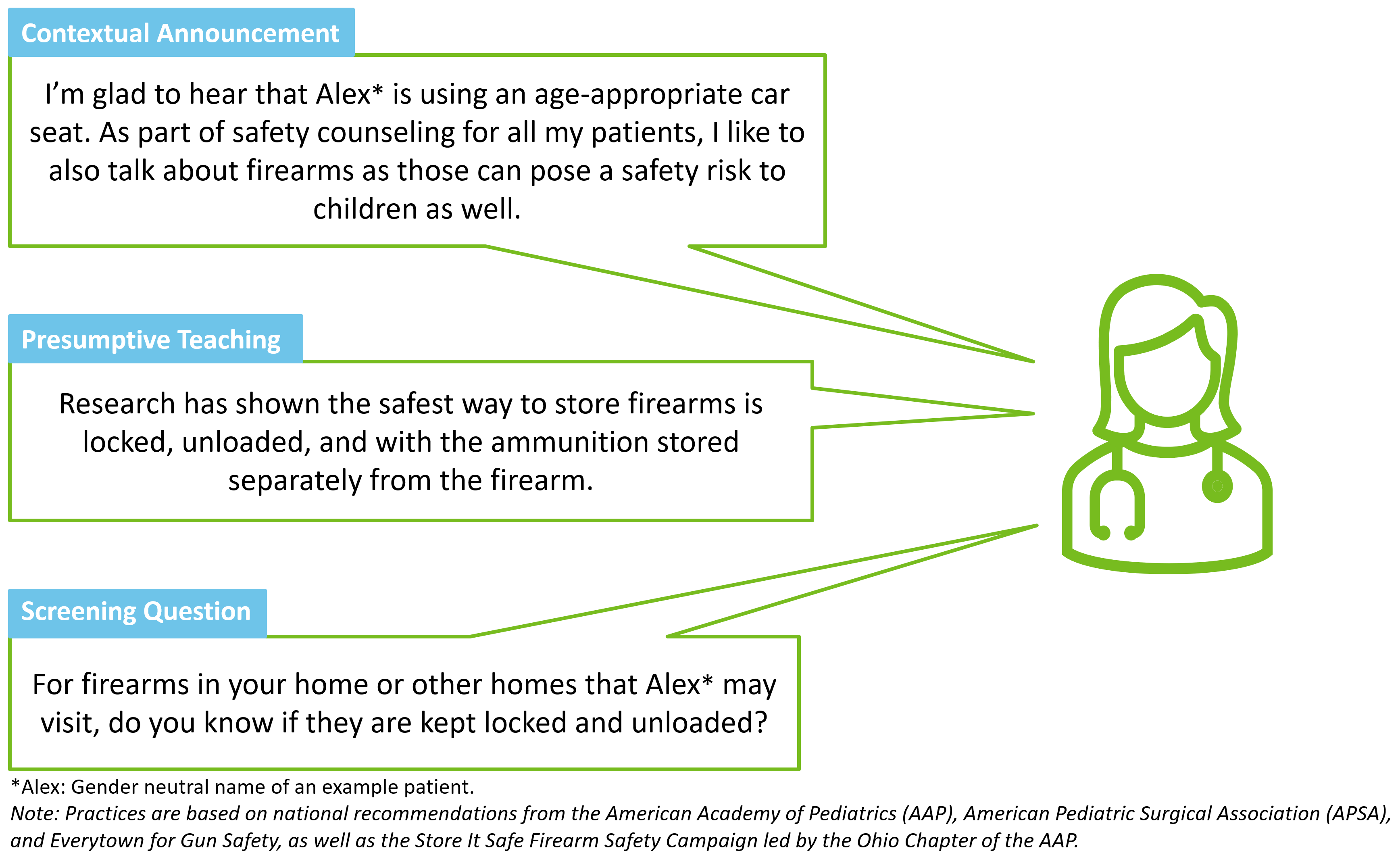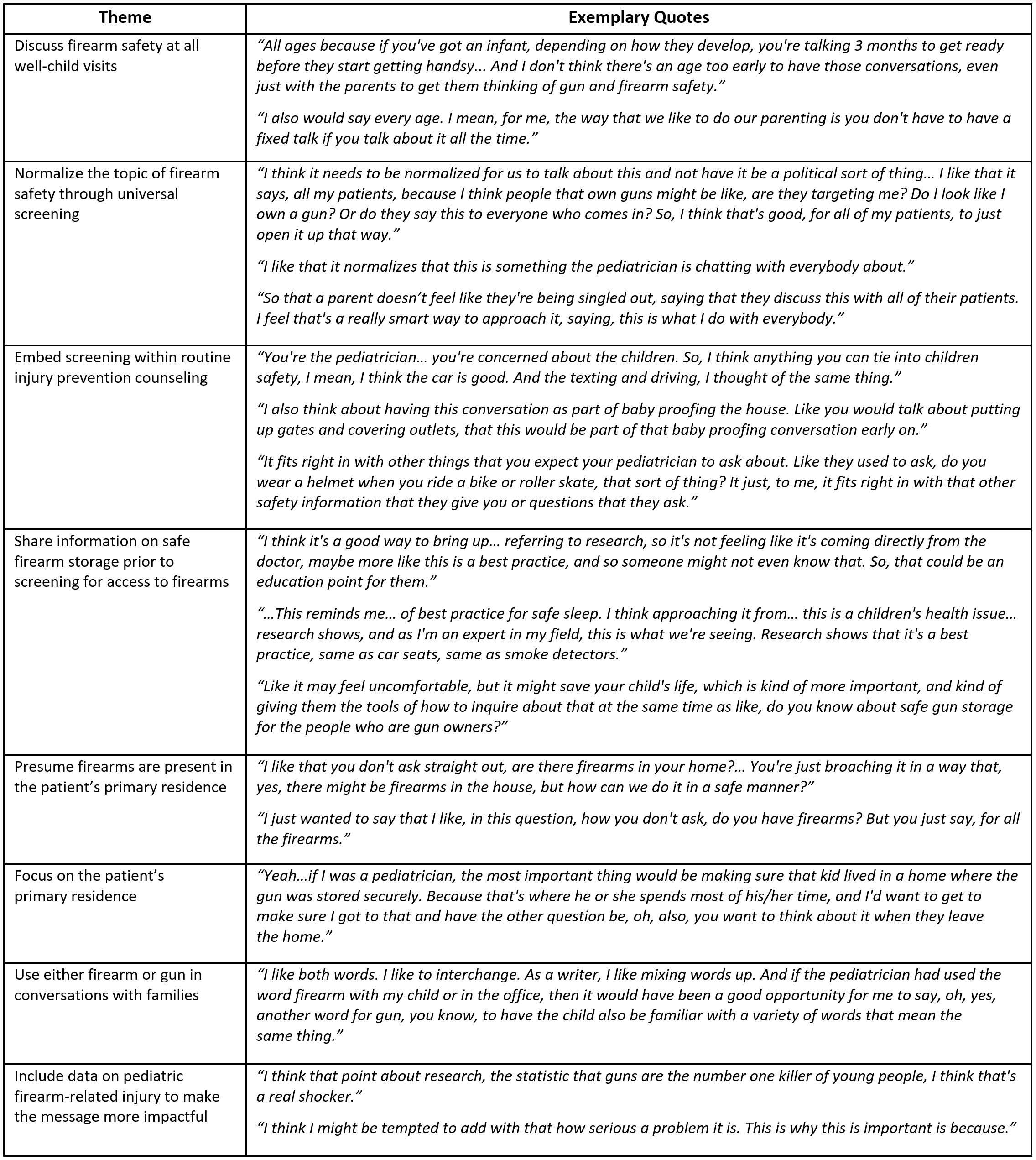General Pediatrics: Primary Care/Prevention
General Pediatrics 6
289 - Community Perspectives on Firearm Safety Communication Strategies during Pediatric Primary Care Visits
Monday, May 1, 2023
9:30 AM - 11:30 AM ET
Poster Number: 289
Publication Number: 289.407
Publication Number: 289.407
Michelle L. March, Cincinnati Children's Hospital Medical Center, Cincinnati, OH, United States; Andrea Meisman, Cincinnati Children's Hospital Medical Center, Cincinnati, OH, United States; Matthew W. Zackoff, Cincinnati Children's Hospital Medical Center, Cincinnati, OH, United States; Melissa Klein, Cincinnati Children's Hospital Medical Center, Cincinnati, OH, United States; Francis Real, Cincinnati Children's Hospital Medical Center, Cincinnati, OH, United States

Michelle L. March, MD, MPH (she/her/hers)
Academic General Pediatrics Fellow
Cincinnati Children's Hospital Medical Center
Cincinnati, Ohio, United States
Presenting Author(s)
Background: Firearm-related injury is the leading cause of death in U.S. children. Pediatricians are uniquely positioned to share evidence-based information with families. Though research has shown parents are receptive to discussing firearm safety with their pediatrician, minimal data exists on parents’ communication preferences.
Objective: To explore parents' and community members’ perspectives on Resident Education And Counseling on Household Firearm Safety (REACH), a novel virtual reality curriculum for training pediatricians to discuss firearm safety during primary care visits.
Design/Methods: Participants were recruited from the Cincinnati Chapter of Moms Demand via email to engage in one 60-minute focus group. Participants completed a pre-survey to collect demographic information. From 11/2022 – 12/2022, focus groups were conducted using a semi-structured interview guide to elicit parent and community perspectives on firearm safety communication strategies. First, participants were introduced to the REACH communication framework (Figure 1). Next, participants provided their perspectives on this stepwise approach as well as general preferences for discussing firearm safety at visits. Focus groups were transcribed and thematically analyzed using the rigorous and accelerated data reduction (RADaR) technique. Demographic information was descriptively analyzed.
Results: Twenty-two individuals participated in one of four focus groups. Participants were predominantly female (96%), White (82%), non-Hispanic (86%), between 40-49 years of age (41%), and parents/caregivers of at least one child currently living in their household (68%). Participants lived in suburban (50%), urban (45%), and rural (5%) neighborhoods. The presence of household firearms was endorsed by 32% and a majority (86%) reported never receiving verbal information on household firearm safety from their child’s pediatrician. Core themes from the focus groups were summarized in Table 1. Participants recommended discussing firearm safety at all well-child visits - starting early and occurring often to normalize the topic. They felt embedding firearm safety within routine injury prevention counseling was appropriate and screening for access should focus on the primary residence. Lastly, participants reported sharing data on pediatric firearm-related injury could make messaging more impactful.
Conclusion(s): The REACH communication framework for firearm safety screening and counseling was well-received by parents and community members. Future work will need to assess the transferability of these findings to other communities.


